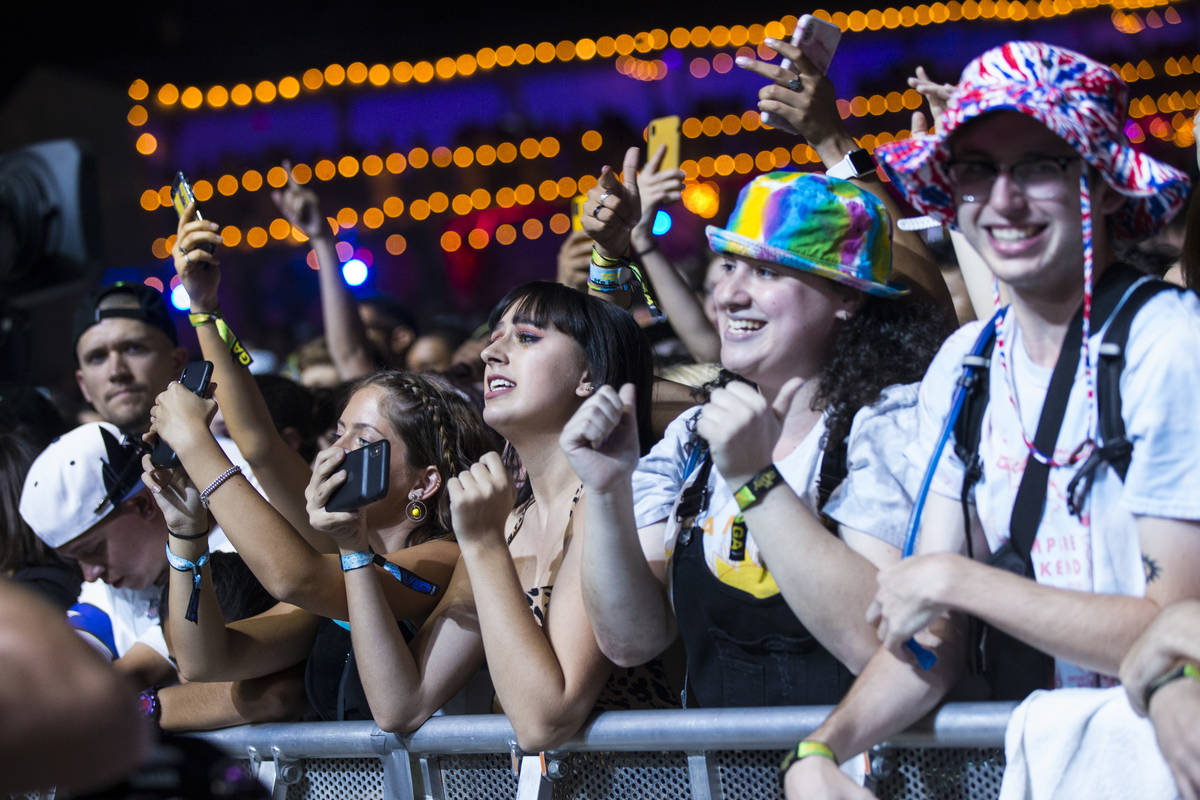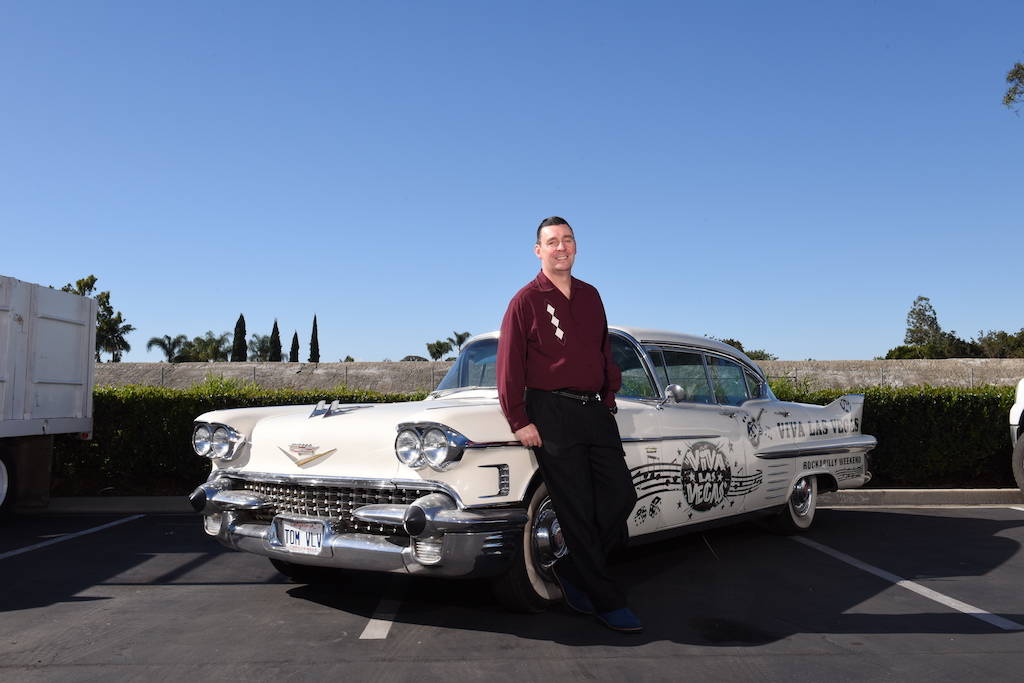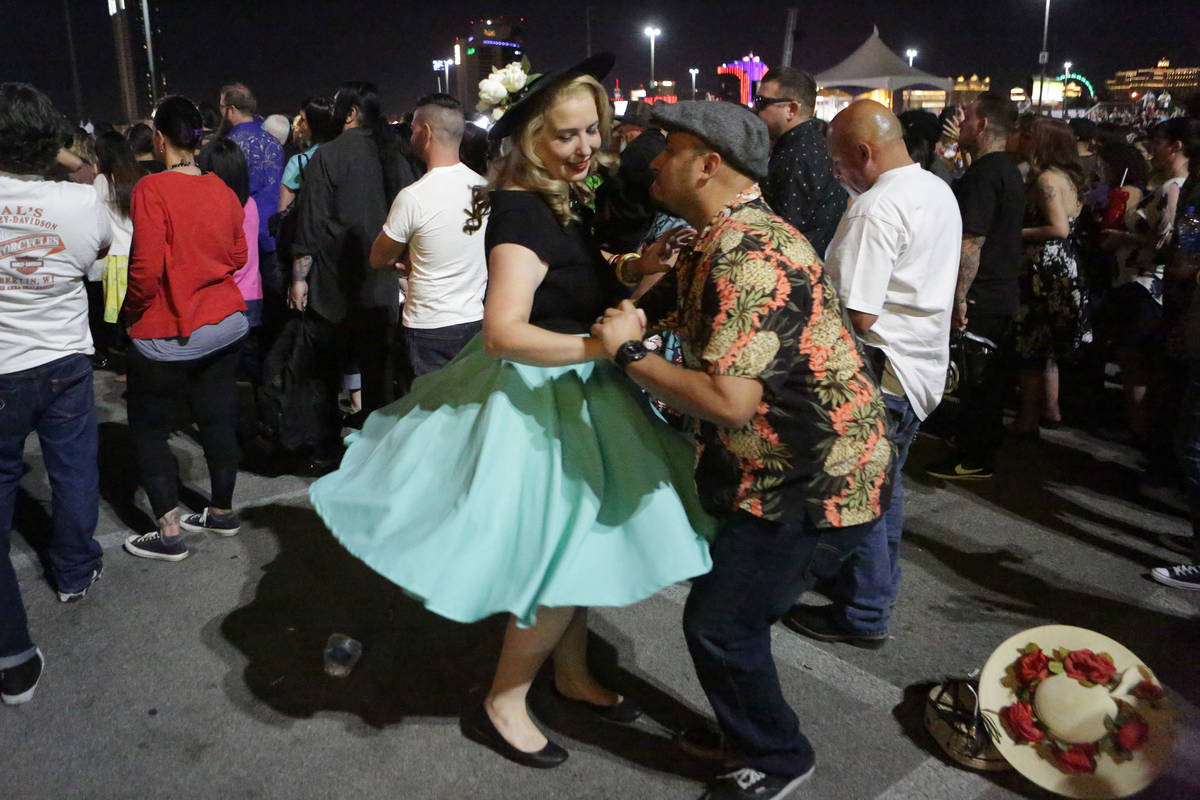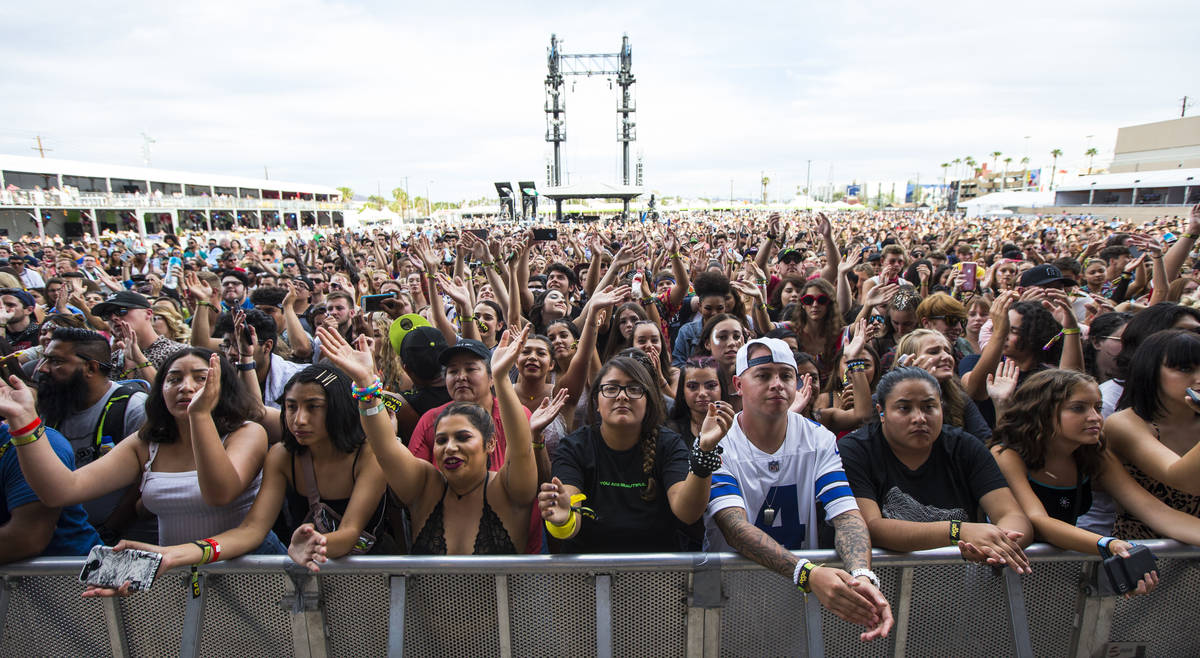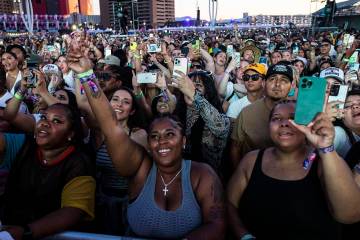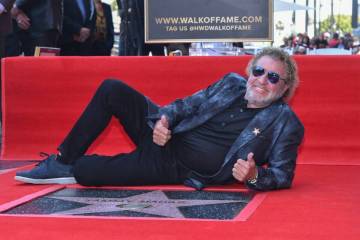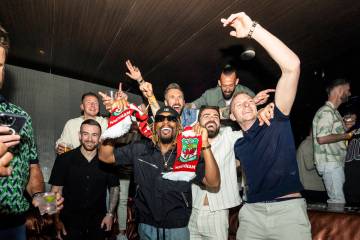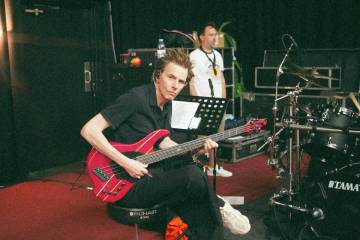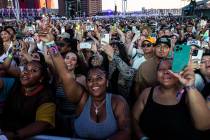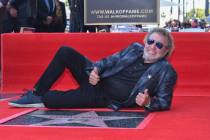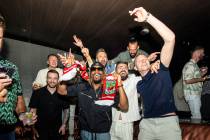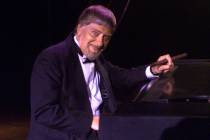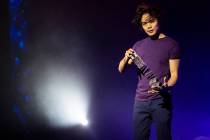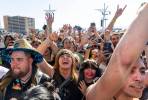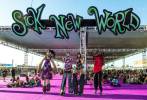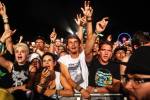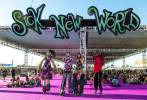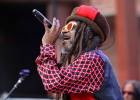How will music festivals adapt in coronavirus era?
It’s a car meant to be seen — to be seen in — a ’58 Cadillac Deville, an automotive land shark all fins and fenders, big as it is beautiful.
Tom Ingram doesn’t drive it around much these days, though.
Credit the custom paint job: “Viva Las Vegas Rockabilly Weekend,” it reads in black amid a swirl of music notes, bearing the logo of the world’s largest gathering dedicated to the throwback sound.
The event founded by Ingram was set to celebrate its 23rd year in April, making it the city’s longest-running music festival, which now draws upward of 20,000 heavily pompadoured and tattooed fans annually to The Orleans to revel in vintage tunes and threads.
But then came the coronavirus, and there went Viva Las Vegas 2020.
“Everything that I had put into it, basically, is lost,” Ingram says from his home in Los Angeles. “By not having the festival this year, I now have no income for the next year. It’s a massive financial impact.”
Ingram largely keeps his car off the streets, because when he takes it out for a spin, fans invariably come up and ask him about next year’s festival — questions that he currently doesn’t have many answers to.
Festivals are big business
And so it goes for just about anyone involved in Las Vegas’ increasingly robust music festival circuit.
This market has blossomed into a destination city for myriad fests in recent years, among them: the world’s largest electronic dance music event (Electric Daisy Carnival); one of the country’s biggest punk rock fests (Punk Rock Bowling); a big-box, multi-genre crowd-pleaser (Life is Beautiful); an acclaimed heavy music weekend (Psycho Las Vegas); a hard rock and heavy metal marathon (Las Rageous); an around-the-clock blues bonanza (Big Blues Bender); a promising hip-hop and R&B upstart that premiered to sold-out crowds last November (Day N Vegas); not to mention a reggae entry set to debut in October (Reggae Rise Up).
It’s become big business for the city: Those fests drew an estimated 750,000-plus fans combined last year.
EDC alone has generated an economic impact of over $1.5 billion since debuting in Vegas in 2011, and Life is Beautiful has contributed $350 million in the past seven years.
But in a time when large-scale public gatherings simply are not viable for fear of spreading COVID-19 en masse, how will festivals adapt?
And what will going to a festival look like in the foreseeable future if new health precautions have to be taken in order to make them happen?
If the future is cloudy, the present is clear for Ingram: Cutbacks have to be made.
He’s had to lay off the 120 workers who staff his festival and give up his 2,000-square-foot corporate offices.
Still, Ingram has a die-hard fan base — 65 percent of those who bought tickets for this year’s fest have carried them over to 2021, rather than seek a refund.
“I’ve got no doubts that the audience will come back,” he says. “I’ve worked out that we’re fine to get through this year.
“The problem is, what happens next year?” he continues. “We’ve looked at every scenario that we can think of and how we’ll deal with it — and none of them are good.”
The shows that never were
The acts were booked.
The show poster was done.
They were ready to reveal the lineup — a lineup that will now never be revealed.
“We had our lineup built — we normally announce the lineup the third week of April,” Life is Beautiful owner Justin Weniger recalls. “We’re excited about it. We have a system in place. We’re ready to launch the thing — and then COVID hits.”
The situation was unprecedented.
Weniger and company didn’t waste time, deciding to take the year off and come back in 2021 — even though Life is Beautiful, which takes place in September, was still five months away.
Punk Rock Bowling initially was rescheduled from May to September before also punting to 2021 — same with Psycho Las Vegas.
“Even when we were talking about the postponement to the fall, I said, ‘Look, I’m happy to entertain it,’ but I didn’t really see a pathway forward,” says Shawn Stern, Punk Rock Bowling’s co-founder along with his brother, Mark Stern. “I mean, how are you going to put large groups of people together in the midst of a very deadly pandemic?
“Life is Beautiful was smart to say, ‘It’s not going to happen,’ ” he adds. “I think you’re going to find that everyone else is going to have to do the same thing and there are not going to be any festivals the rest of the year.”
Nevertheless, the Big Blues Bender currently remains a go for September, while Reggae Rise Up and Electric Daisy Carnival are still on for their rescheduled dates in October.
“At the time we had to postpone the show, we had already set in motion everything we planned to do,” explains Pasquale Rotella, the founder of EDC. “The trucks were loaded and en route to Vegas. Now, the postponement has allowed us extra time to go back and address some of the details and make the show even better. I’m excited about having the festival in October, as long as it’s safe to do the show then. We’re preparing every day so we’re ready to go as soon as the world opens up.”
The economic benefits of finding a way to get the festival circuit up and running again — when it’s safe to do so — are pronounced.
“Think about the impact of the event industry,” Weniger says, using his fest as an example. “There’s a direct impact of $350 million that Life is Beautiful has generated. And there’s an indirect impact of all the people who would have worked on that, the small businesses that do better (when Life is Beautiful draws tens of thousands of concertgoers downtown).
“That’s the part that we’re looking at right now,” he continues. “How do we get that back for the community? How do we get those wheels turning again?”
New era, new measures
Security guards brandishing thermometers in place of hand wands.
Staggered entry times to avoid long lines.
Roped-off areas in front of the stage to provide some measure of social distancing in what otherwise would be a jam-packed environment.
No moshing or crowd-surfing.
Could this be what attending a show looks like when concerts resume?
A new, 29-page report suggests these possibilities.
“The Event Safety Alliance Reopening Guide,” written by the Event Safety Alliance, a collection of more than 300 music and live industry professionals, provides an early road map for live music’s return.
Its authors acknowledge that the measures seem better tailored for smaller concerts at first and then building from there.
“Larger crowds tend to be more difficult to manage under the best of circumstances. These are not at all the best of circumstances,” says Steven A. Adelman, an Arizona-based attorney and vice president of the Event Safety Alliance, who edited the report. “But really, for any crowd to get together in a way that doesn’t expose them all to illness is going to require a lot more compliance by patrons than seems to be widespread right now.
For festival organizers, there are obvious logistical hurdles to putting on an event in the coronavirus era.
“The staff that does Life is Beautiful is 3,500 people at any given time,” Weniger notes. “How do you safely feed 3,500 people in a COVID world?”
And then there’s crowd control.
Among the early suggestions for safely bringing fans back to shows has been a reduction in venue capacity, which Ingram says is a nonstarter for his festival.
“It wouldn’t surprise me if we end up being told that we can only have a 40 percent or 50 percent capacity,” he says. “That then makes the event completely impossible to run financially. If there are any sort of drastic capacity limits put on any festival, it’s just going to kill the atmosphere. There’s just no way around it. If you’ve got a room that normally takes 2,000 people and you’re told that now you can only have 500 people, you’ve got an empty event that’s losing money.”
Moreover, the festival experience is an inherently communal one, all about meeting new people, reveling in the company of like-minded strangers.
Smaller, socially distanced crowds — if even possible — would deaden that atmosphere.
“The big draw of our festival — and lots of festivals — is that it’s kind of … our religion, it’s our church, it’s our coming together,” Stern says. “The experience is going to change so drastically that it’s not going to be worth it. Wearing masks and all that stuff isn’t going to stop a contagion like this when you’re putting thousands of people — or tens of thousands of people together — and they’re drinking and doing whatever they’re doing.”
Ingram remains adamant about not compromising the essence of his festival.
“I won’t be bringing back Viva Las Vegas if it’s not the right thing to do,” he says. “I’m not going to attempt to do something that doesn’t create what the attendees want to go to. It’s a sad thing to have to say, but the event has to be right. If it’s not right, it’s not worth doing.”
A group effort to recovery
The former wrestling champ has something new to grapple with.
Pat Christenson, a standout athlete at the University of Wisconsin in the ’70s, has been a fixture of the Las Vegas live music scene for more than 35 years, having overseen the Thomas & Mack Center and Sam Boyd Stadium since the early ’80s, booking over 500 concerts.
The current president of Las Vegas Events, Christenson also is heading up the Las Vegas Events Covid Committee, a consortium of more than 40 local music scene figures representing venues, promoters and more.
Consulting with Adelman, they’ve been working for the past six weeks on devising plans for the return of live music in Las Vegas, focusing on doing so when there are no restrictions on audience size.
“Reopening for us means full crowds, when we are able to do full-fledged events, sold-out events,” Christenson says. “Events are about the experience of being next to somebody. Maybe there will be some kind of transition, but, to me, we reopen when we can start doing events where people can sit next to each other or stand next to each other.”
Weniger notes how responsive the local live entertainment scene has been of late when circumstances demand they adapt.
“You’ve looked at how, in the past five years, security protocols have changed at festivals based on things that have caused a reaction to that,” he says. “This will probably be similar to that, where we’re thinking through.”
They won’t be doing so alone.
The live entertainment industry can’t relaunch in a vacuum.
“The airline industry is going to have to figure out social distancing and airplanes, how to make that comfortable for a consumer again, far before another festival is going to happen,” Weniger says. “A lot of different people are going to come together to find solutions for these things. There’s going to be a lot of cross-industry learning.”
In the true spirit of music festivals, it will be a communal effort.
“When you look at what Metro does and all of the preparation for events now, it’s citywide,” Christenson says, citing the progress members of his committee have made in the past month and a half of working together. “Everybody is well on their way to a plan — having their own plan, their own guidelines. They’re a whole lot smarter about what they need to do than they were six weeks ago.
“When we are ready to reopen,” he adds, “this city will be ready.”
Contact Jason Bracelin at jbracelin@reviewjournal.com. Follow @JasonBracelin on Twitter.



